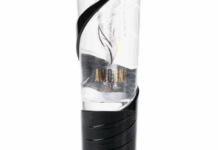What actors know about burnout and how PEM emotional movement training can unlock energy, protect your health, and make work feel human again.
In Los Angeles, Manhattan, San Francisco, burnout doesn’t look dramatic.
It looks like waking up already tired, scrolling email with a knot in your stomach, and then pouring another espresso so you can “power through.” The secret most people don’t know— what actors know about burnout that you don’t —is that burnout isn’t just “too much work.”
It’s your nervous system stuck between opposite impulses, like one foot on the gas and one on the brake for years.
Actors who train with the Perdekamp Emotional Method (PEM) learn to work with that system directly. They discover, in Sarah Victoria’s words:
“that’s what I want to get across, that everyone knows you can be emotionally intense and safe at the same time.”
Sarah Victoria
That same emotional movement training can help non-actors unlock energy, reduce chronic stress, and bring more flavor back into a fun-loving life.
What actors know about burnout that you don’t
On set in Atlanta, Berlin, Vegas or Chicago, a good actor might spend twelve hours in terror, grief or rage—then walk off, grab ramen, laugh with friends, and sleep like a baby.
Another actor plays the same scenes and ends the week shattered.
Stephan Perdekamp explains one big reason. Many actors are trained to convince the brain it’s really in danger:
“I think one of the biggest reasons for this burnout is that you want to convince your brain to be in a situation that is physically not apparent.”
Stephan Perdekamp
[If an actor is working on the production of a sinking boat set all day], so the set is safe, but the mind is living on a sinking boat all day. The body keeps pumping energy as if death is near. Even when the cameras stop, “the actor is on the boat, is on the boat, is on the boat, and the body eats up energy.”
PEM flips this.
The body goes into the emotion.
The mind stays in the studio or the office.
That means intensity on cue, without trashing health, creativity, or that fun-loving side of you that likes late dinners and good wine.
PEM: Emotional movement training, not therapy
PEM started in the 1990s when Stephan, then a theater director, wanted fierce performances without hurting people:
“I started out as a theater director and wanted to have intense emotions, but in a safe way.
I didn’t want to be responsible for colleagues getting hurt or having long-term psychological problems.”
Instead of digging into trauma, he studied what emotions are physically.
The team discovered that in the nervous system there are tiny “triggers, which if activated, create complex movement patterns through the whole body. And those movement patterns are emotions.”
PEM teaches you to:
-
Sense those micro-movements
-
Switch them on and off
-
Build them up safely, then release them fully
From the inside, partner Sarah Victoria describes it like this:
“you don’t actually play the emotion. You have the emotion in the body because you’ve trained it already, so you don’t even focus on the emotion.”
You don’t need to “become” a tragic character. You need a practical, body-based way to move emotion through, so it doesn’t clog your system.
When your nervous system gets “jammed”
Modern psychology now recognizes that stress and burnout are not just mental. They’re patterns in the nervous system. Stephan puts it plainly:
“stress is basically a jammed system of fight and flight responses.”
In PEM language, fight = aggression; flight = fear. In real life:
-
Your fear wants to run from the impossible inbox.
-
Your aggression wants to push through and fix everything.
Both patterns grab the same muscles. Neither completes. The body throws more energy at the problem:
“what you do is that you invest similarly in both patterns stronger, which means that they jam better.”
Over time, just thinking about work can feel heavy. The body quietly decides:
“we’re not going to throw more energy on this problem.
That’s what we call burnout.”
PEM breaks the jam by training each pattern separately. You learn exercises that:
-
Drive aggression in a clean, physical way
-
Drive fear in a clean, physical way
-
Then release both, so your system resets
You’re no longer dragging years of frozen reactions into every Monday morning.
You get to be the person with energy for late-night tacos, art openings, and the kind of fun-loving weekend that actually restores you.
Emotional training for non-actors (yes, you)
PEM didn’t stay in the studio. As actors changed, the people around them noticed:
“when we started working with people, actors,
eventually their friends and family approached us
and said, look, they’re so calm now. They’re so peaceful now.
Can we learn this too, please?”
Now there are courses for non-actors—people running start-ups in SoMa, kitchens in Vegas, galleries in Chelsea, or hotels in Hong Kong. The tools are practical:
-
Short physical drills you can repeat for life
-
Clear ways to calm your system after a hard day
-
Emotional patterns you can separate and recombine, like a musician with scales
Sarah shares what this did for her:
“the amount of stress I could get rid of and release from my body in the past 20 years”
Sarah victoria
And the payoff is social, not just personal:
“when I’m not in stress, I have more space, I gain more tolerance.
I have more space to help other people,
because if I’m stressed, I can’t help anyone.”
That’s the kind of emotional relatability and sense of humor that makes a dinner in Tribeca or a rooftop in Buckhead feel good—people whose nervous systems have room for you.
For a medical deep-dive on burnout itself, you can read the Mayo Clinic’s overview of job burnout.
Think of PEM as emotional strength training: it adds flavor to your workdays and keeps your fun-loving side very much alive.
FAQ: Emotional training, PEM, and burnout
Q: Is PEM just another “outside-in” acting trick?
A: As Stephan says, “it’s not accurate that it’s an outside-in approach.” Early exercises use muscle movement to teach awareness, but over time, “later people like Sarah, when they play, they move only electricity from muscle group to muscle group, which creates inner processes that the mind then reacts to.” PEM starts below conscious thought and grows outward—more inside-out than many classic methods.
Q: Do I have to relive trauma to get results?
A: No. That’s the point. PEM works with “the mechanics of the body and the nervous system directly.” You train movements and bioelectric “access points,” not memories. Your body learns to run fear, grief, or aggression like a dancer runs choreography—intense, but safe—then drop it and go home to cook, parent, or meet friends.
Q: Can emotional movement training really help with burnout from a regular job?
A: Yes. Burnout is often that jam of fear and aggression patterns around work. PEM offers “clear exercises that solve the aggression pattern and the fear pattern and which helps them to create energy.” People use it to feel lighter, recharge between meetings, and stay present for the flavor and fun-loving parts of life that don’t fit in your calendar app.
Your next close-up: life without burnout
Whether you’re running a kitchen in San Diego, a fund in New York, or a gallery pop-up in Berlin, your nervous system is your real capital. Learning what actors know about burnout that you don’t means learning how your body moves emotion—and how to unjam it.
PEM won’t remove deadlines, kids, or ambitious dreams. It gives you a way to meet all of them with a calmer system, more energy, more flavor in the day, and a fun-loving presence that doesn’t clock out when you do. If that sounds like the next role you want to play, take a class, try an on-demand module, or bring a workshop to your city and see what your own “athlete of emotion” can do.
What actors know about burnout and how PEM emotional movement training can unlock energy, protect your health, and make work feel human again.


















![Get Your Indie Movie Made (Responsibly): Jeff Caruso of Wrapbook Leads the AFM 2025 Film Finance Conversation [Exclusive Interview] American Film Market](https://dailyovation.com/wp-content/uploads/2025/11/AmericanFilmMarket2025-1-218x150.jpg)














